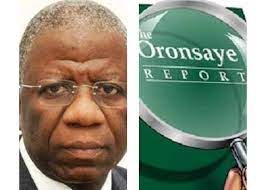
Introduction:
In 2012, the Steve Orosanye-led Presidential Committee on the Rationalization and Restructuring of Federal Government Parastatals, Commissions, and Agencies presented a comprehensive report aimed at enhancing efficiency and reducing redundancy in Nigeria’s public sector. The Orosanye Report, a pivotal document in the country’s governance landscape, outlined numerous recommendations for restructuring various government agencies. Let’s delve into 10 key insights from the Orosanye Report that continue to shape the trajectory of Nigeria’s public sector reform.
1. Consolidation of Agencies:
- The Orosanye Report recommended the consolidation and merger of numerous government agencies to streamline operations and eliminate redundancy. This aimed to enhance efficiency and reduce the financial burden on the government.
2. Reduction of Workforce:
- One of the primary focuses of the report was the reduction of the federal workforce. This involved the merger of agencies with overlapping functions and the downsizing of staff to optimize human resources.
3. Creation of Lead Agencies:
- The report proposed the establishment of lead agencies to coordinate and oversee specific functions, eliminating the need for multiple agencies handling similar tasks. This aimed to improve accountability and effectiveness.
4. Digitization and Technology Integration:
- To modernize operations, the Report emphasized the importance of digitization and the integration of technology across government agencies. This included the adoption of e-governance practices for improved service delivery.
5. Financial Sustainability:
- The report underscored the need for government agencies to operate within sustainable financial frameworks. This involved rationalizing expenditure, optimizing revenue collection, and ensuring financial accountability.
6. Performance-Based Appraisal:
- The introduction of performance-based appraisal systems was recommended to assess the effectiveness of government agencies. This shift towards a results-driven approach aimed to enhance productivity and service delivery.
7. Strengthening Oversight Mechanisms:
- The Report called for the strengthening of oversight mechanisms to ensure greater accountability and transparency within government agencies. This involved empowering regulatory bodies to enforce compliance.
8. Elimination of Redundant Positions:
- Reducing bureaucracy and eliminating redundant positions within government agencies was a key recommendation. This involved streamlining organizational structures for increased efficiency.
9. Enhanced Training and Capacity Building:
- Recognizing the importance of a skilled workforce, the report proposed comprehensive training and capacity-building programs to equip government employees with the necessary skills for their roles.
10. Public-Private Partnerships (PPPs):
- The report advocated for increased collaboration between the public and private sectors through Public-Private Partnerships. This approach aimed to leverage private sector efficiency and resources for improved service delivery.
Conclusion:
The Orosanye Report remains a cornerstone in Nigeria’s ongoing efforts to reform and optimize its public sector. The recommendations outlined in the report are not only crucial for fiscal responsibility but also for fostering a more efficient, transparent, and accountable government. As Nigeria continues to navigate the complexities of governance, the insights from the Report serve as a roadmap towards a more streamlined and effective public administration.








